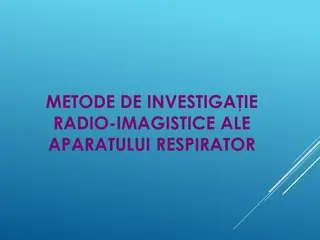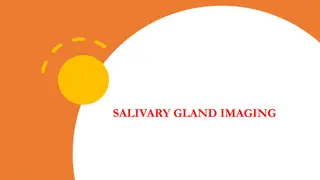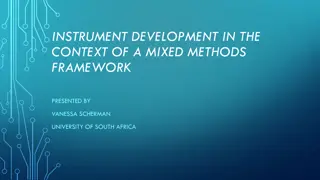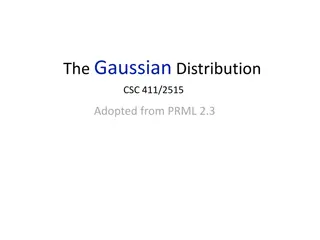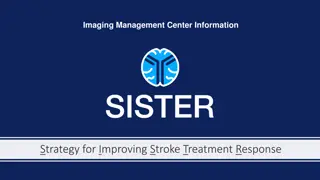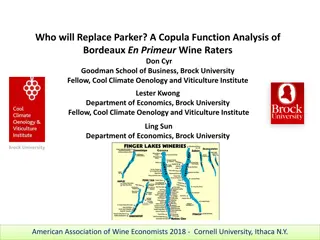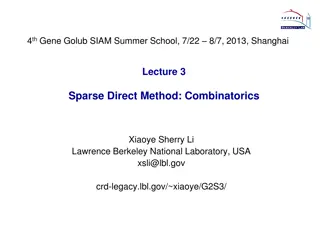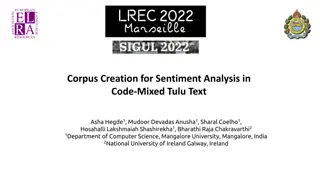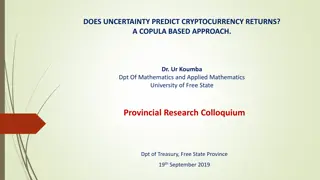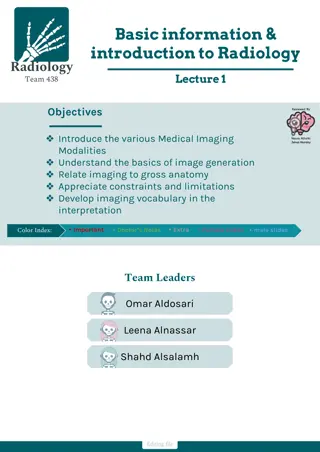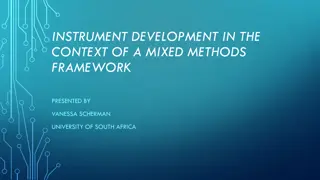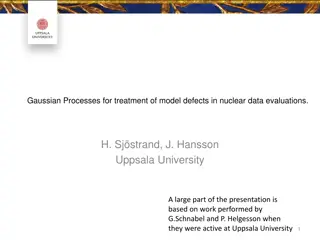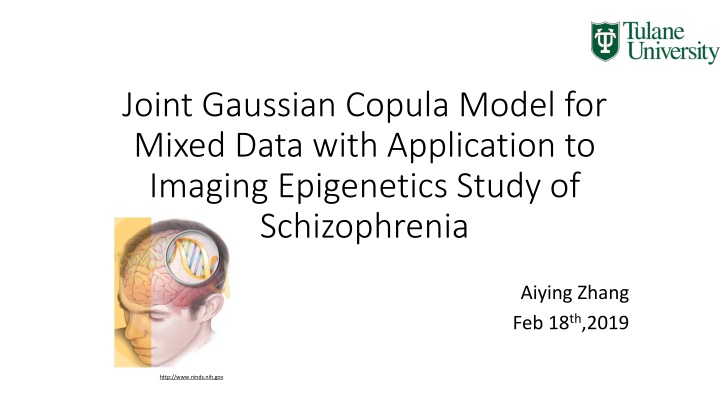
Joint Gaussian Copula Model for Mixed Data with Application to Imaging Epigenetics Study of Schizophrenia
Schizophrenia (SZ) is a chronic and severe mental disorder characterized by hallucinations, delusions, cognitive dysfunction, and disrupted brain connectivity. This study explores the use of a Joint Gaussian Copula Model to analyze mixed data types, combining molecular to organ levels, providing new insights into complex mental diseases such as SZ. By incorporating techniques from imaging epigenetics, the research aims to understand the neuro-epigenetics mechanism of SZ and identify prospective genes for precision medicine.
Download Presentation

Please find below an Image/Link to download the presentation.
The content on the website is provided AS IS for your information and personal use only. It may not be sold, licensed, or shared on other websites without obtaining consent from the author. If you encounter any issues during the download, it is possible that the publisher has removed the file from their server.
You are allowed to download the files provided on this website for personal or commercial use, subject to the condition that they are used lawfully. All files are the property of their respective owners.
The content on the website is provided AS IS for your information and personal use only. It may not be sold, licensed, or shared on other websites without obtaining consent from the author.
E N D
Presentation Transcript
Joint Gaussian Copula Model for Mixed Data with Application to Imaging Epigenetics Study of Schizophrenia Aiying Zhang Feb 18th,2019 http://www.ninds.nih.gov
Schizophrenia (SZ) SZ is a chronic and severe mental disorder Hallucinations, derealization, delusions, loss of initiative, and cognitive dysfunction Related to disrupted brain connectivity Recent techniques: combining heterogeneous data From various molecular levels (e.g., single nucleotide polymorphisms (SNPs), DNA methylation) to organ and tissue levels (e.g., brain fMRI). Provide new perspectives on complex mental diseases like SZ. Epigenetics The study of how genes are regulated through reversible and heritable molecular mechanisms Modify gene expression DNA methylation Imaging-epigenetics: Provide a promising approach for precision medicine ALBERTO RUGGIERI / GETTY IMAGES MICHAEL GREICIUS ET AL. , SCIENCE
Graphical Models Nodes: Brain regions of interest (ROIs), DNA methylation sites Edges: Connectivity/ Associations Current method: Gaussian graphical model (GGM) Partial correlation: measure the direct relationship Mathematical simplicity: estimate the precision matrix = 1, i.e. the inverse of the covariance matrix Limitations: Assumption: Gaussian distributed data Only considering the estimation of a single graphical model
Motivations Clinically: Understand the neuro-epigenetics mechanism of schizophrenia Provide prospective genes for precision medicine Mathematically: Relax the Gaussian assumption Jointly estimate multiple graphical models
Materials Data acquisition and Preprocessing: fMRI image: Were collected during a sensory motor task Standard prepossessing steps were applied using SPM12 Multiple regression considering the influence of motion was performed 264 region of interests (ROIs) were extracted by the Power1 method DNA Methylation Were acquired through blood samples Quality control, variance filtering Selected the methylations whose mapped gene are associated with SZ at significance level ? = 5 10 8from GWAS catalog 261 DNA methylations were left in the study Data description: Source: the Mind Clinical Imaging Consortium (MCIC) Subjects: 183 79 SZ patients 104 healthy controls Data type: fMRI image DNA Methylation 1J. Power, D. Fair, B. Schlaggar, and S. Petersen, The development of human functional brain networks, Neuron, 67, 735 748 (2010).
Methods: Gaussian Copula Model* Relax the assumption to continuous data Key: to build the mapping function from the continuous vector (correlation) to the Gaussian vector (correlation) Kendall s tau statistic : 2 ?(? 1) 1 ?<? ? ????(Xik Xik ) ????(Xjk Xjk ), ??? ? j ???= 1 , ?? ??????, The transformed Gaussian correlation: ??? = ???(? ???) 2 *H. Liu, J. D. Lafferty, and L. A. Wasserman, The nonparanormal: semiparametric estimation of high dimensional undirected graphs, J. Mach. Learn. Res.,10, 2295 2328 (2009).
Methods: Adopt the -learning method* to estimate the association networks for each group k k=0: the control group, k=1: the case group -score ??? ??? Joint Network Estimation: Bayesian integrative method Prior: ?( l0, l0 ?( l1, l1 ? for every pair of the variables ?i and ?j under group k ? indicates the edge status ??? ? 2), ?= 0 ??? ?|??? ? ? ??? = 2), ?= 1 ??? *A. Zhang, J. Fang, F. Liang, V. Calhoun and Y. Wang. Aberrant Brain Connectivity in Schizophrenia Detected via Fast Gaussian Graphical Model. IEEE JHBI (2018).
Methods: 0,d,eij 1,d) , d = 1,2,...,4. 0,??? 1) and there are four configurations of ?ij, denoted as ?ij ?= (eij Let ???= (??? ij for each configuration Based on the Bayesian theorem, we can calculate the posterior probability d Integrate ??? 0,??? 1 through the Stouffer's meta-analysis*: 4 4 0,i= 0 + ??? 1,i= 0 0,i= 0 + ? eij 1,i= 0 ?,?= 0 0? eij 1? eij ??? / ? eij , ??? ?=1 ?=1 ?,? = ??? 4 4 0,i= 1 + ??? 1,i= 1 0,i= 1 + ? eij 1,i= 1 ?,?= 1 0? eij 1? eij ??? / ? eij , ??? ?=1 ?=1 The Bayesian integrated -score: 4 ij ??? ?,?, ??? ?= d ? = 0,1 ?=1 *Stouffer S. et al., The American Soldier: Adjustment during army life. Vol. 1. Princeton University Press, Princeton (1949).
Results: We have identified 386 and 420 edges for the case and control groups, respectively Separate estimation Joint estimation SZ patients Healthy controls Figure 1. The sagittal views of the brain connectivity patterns visualized by BrainNet viewer*. *M. Xia, J. Wang, and Y. He, Brainnet viewer: A network visualization tool for human brain connectomics, PLoS ONE, vol. 8(7), pp. 1 15,2013.
Results: 12 functional network systems Sensory/somatomotor network (SSN) Cingulo-opercular task control network (CON) Auditory network (AN), Default mode network (DMN), Memory retrieval network (MRN), Visual network (VN), Fronto-parietal task control network (FPN), Salience network (SN), Subcortical network (SCN), Ventral attention network (VAN), Dorsal attention network (DAN) Cerebellum network (CERE). Figure 2. 12 functional networks considered in this paper. These networks are expressed in the 264 nodes of the templatedefined by Power et al. and visualized through the Brainnet Viewer.
Results: Hubs: Definition: the variables (nodes) with degrees at least two standard deviation higher than the mean degrees 5 hub ROIs: middle frontal gyrus, cingulo-opercular task control functional network 5 DNA methylation hubs Table 1. The identified hub ROIs and the hub methylations of the SZ patients Brain ROI hubs Index Anatomical location Functional Networks 87 Superior frontal gyrus, left Extra-nuclear, right Default mode 209 Subcortical 181 Middle frontal gyrus, left Middle frontal gyrus, right Superior temporal gyrus, left DNA methylation hubs Cingulo-opercular task control Cingulo-opercular task control Auditory 40 56 ID Mapped gene ITSN2 PLCB2 HLA-A RUSC2 CACNA1C cg25477928 cg02240622 cg07163603 cg15271616 cg25519930
Results: 10 methylation-brain ROI associations for SZ 5 pairs have been reported in the literature RANBP2 showed an important role in SZ that it has affected the insula1 and precentral gyrus2 DDR1 has been reported to associate with cingulate gyrus3 KCNA6 has effect on the frontal gyrus4 TBX1 has been identified as a risk factor for mental disease with influence on the frontal gyrus5 Table 2. Significant neuro-epigenetic interactions for SZ patients Brain ROIs DNA methylation ID cg20668607 cg08028004 cg08028004 Index 58 46 51 82 42 174 45 139 262 97 Anatomical location Insula, right Precentral gyrus, left Insula, right Precuneus, right Cingulate gyrus, left Superior frontal gyrus, left Medial frontal gyrus, right Middle occipital gyrus, left Uncus, left Superior frontal gyrus, left Function Network Auditory Cingulo-opercular task control Cingulo-opercular task control Default mode Cingulo-opercular task control Frontal-parietal task control Cingulo-opercular task control Visual Uncertain Default mode Mapped gene DNAJC11 RANBP2 RANBP2 SGCD DDR1 SLC17A3 KCNA6 ATP8A2 ACSM1 TBX1 cg03811411 cg03270204 cg15691649 cg26162582 cg18236477 cg13619990 cg16722536 1Denier, Christian et al., Familial acute necrotizing encephalopathy due to mutation in the RANBP2 gene. J. of Neur. Sci., 345. 1-2 (2014). 2Ferreira, P. A et al. Interconversion of red opsin isoforms by the cyclophilin-related chaperone protein Ran-binding protein 2. Proceedings of the National Academy of Sciences, 94(4), 1556-1561 (1997). 3Zhao, Z., et al., Transcriptome sequencing and genome-wide association analyses reveal lysosomal function and actin cytoskeleton remodeling in schizophrenia and bipolar disorder. Molecular psychiatry, 20(5), 563 (2015). 4Van Poucke, M., et al., Experimental validation of in silico predicted KCNA1, KCNA2, KCNA6 and KCNQ2 genes for association studies of peripheral nerve hyperexcitability syndrome in Jack Russell Terriers Neuromuscular Disorders, 22(6), 558-565 (2012). 5Hiramoto, T., et al., Tbx1: identification of a 22q11.2 gene as a risk factor for autism spectrum disorder in a mouse model. Human Molecular Genetics, 20(24), 4775 4785 (2011).
Conclusion Proposed a novel approach to address heterogeneous data and joint network estimation for distinct but related conditions. Applied the method to a real SZ study which includes the brain fMRI image and the DNA methylation data. Several of our results have been verified in the literature Provide some potential brain-gene pathways
Acknowledgement Funding NIH (R01GM109068, R01MH104680, R01MH107354) NSF (#1539067) Collaborators Yu-Ping Wang Tulane University Vince D. Calhoun The Mind Research Network



